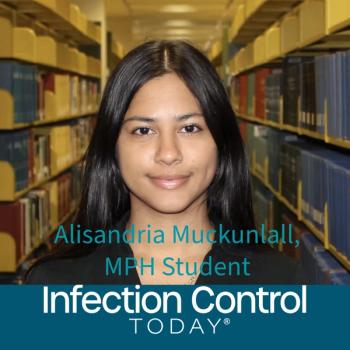
IPs’ Challenges With Facility Cleaning and Disinfection Programs
Doe Kley, MPH, RN, CIC, LTC-CIP, T-CHEST, continues her interview with ICT about why IPs' involvement with their facility's cleaning and disinfection programs is so critical.
As the leader of infection control in their facilities, what challenges do infection preventionists’ face with their facilities’ cleaning and disinfection programs? How should IPs assess the program for their facility to verify it is most usable for the staff?
Infection Control Today® (ICT®) continues with its interview with Doe Kley, MPH, RN, CIC, LTC-CIP, T-CHEST, principal infection preventionist for The Clorox Company, to receive answers to these questions.
This is the second of 3 installments. Watch the first one
ICT: What other challenges do facility cleaning and disinfection programs face now?
Doe Kley, MPH, RN, CIC, LTC-CIP, T-CHEST: There are quite a few, but the key ones are:
- Staffing challenges. Staff is burned out, and many health care workers have left the field. This has resulted in critical staffing shortages and many new staff who need to get up to speed quickly.
- We also know that during the pandemic with some of the supply chain issues, unfamiliar and unapproved products may have found their way into our facilities over the past few years,
- And last, while process monitoring activities may have been cut back during the pandemic, staff may have drifted from standardized practices and protocols. This includes adherence to instructions like proper dilution ratios, wearing recommended PPE [personal protective equipment], and adhering to stated contact times. That’s the thing with “drift”—it happens slowly over time and goes unnoticed until we deliberately evaluate it.
These challenges are worrisome, given that studies show that 80% of pathogens are spread by contact. And other studies have shown that half of the surfaces are missed during cleaning. Taken together, we see a significant increase in our patients' risk of health care-associated infections. There truly is a need to get back to basics.
ICT: Why must the IP be involved with the facility's environmental cleaning and disinfection program?
DK: As previously mentioned, many pathogens responsible for outbreaks and health care-associated infections can be spread by contaminated surfaces. Given the Great Resignation, there are many new IPs in the profession right now, and they are just starting to get their eyes opened to all of the other things that IPs do and know beyond COVID-19 control. These new IPs should understand that they have regulatory oversite for the entire IPC [infection prevention and control] program, including cleaning and disinfection. CMS [Centers for Medicare & Medicaid Services] requires the provision of a clean and sanitary environment for patients. Survey findings will fall under the infection control chapter. The IP is responsible for ensuring that these findings are adequately corrected. Better yet, the IP can avoid this by proactively performing process surveillance and correcting issues as they are identified.
ICT: Where should the IP start when thinking about assessing their facility cleaning and disinfection program?
DK: This is the time when IPs and EVS should work together. They should take a step back to objectively and critically evaluate their program.
I recommend starting with observation to gather data on the program's current state.
Look at the EVS carts—are they all set up the same? The department should have a cart set-up checklist. There should be no “rogue” products on the cart. All chemicals should be labeled, including secondary containers. And this is one reason that I prefer ready-to-use products—no secondary containers to deal with.
Be sure to talk to frontline staff. Be curious, not punitive. You are trying to discover why they are doing a task the way they are. This will provide great insight into misunderstandings and help you focus your education efforts.
While you are boots-on-the-ground performing these observations, be sure to be on the lookout for those “rogue” products. Look behind every closed door in the EVS closets, cupboards in the nurse’s station, etc. Inventory what you are seeing out there.
We know that with a disrupted supply chain early in the pandemic, we sometimes had no choice but to bring alternative products. Are there products that were implemented without going through the proper approval process? Are all of the disinfectants hospital-grade and EPA-registered? Are you finding essentially the same disinfecting chemistry from multiple vendors? For example, let’s say you found canisters of quat-based disinfecting wipes from 2 different manufacturers. Also, be sure to include outpatient areas where you might have oversight.
ICT: Is there anything else IPs should consider when assessing their cleaning disinfection program?
DK: Yes, they should be sure to observe cleaning practices. Are staff cleaning methodically? This means cleaning in a clockwise or counter-clockwise fashion around the room, from higher to lower surfaces, and of course, from clean to dirty—the patient's room should be cleaned before the bathroom, and the toilet should be the last thing cleaned in the bathroom.
Cloths used in the bathroom should not be used outside of the bathroom. Having color-coded microfiber cloths is helpful, but consider disposable disinfecting materials. This way, there is no worry about what color cloth to use, no risk of dilution errors, and no microfiber to launder, track, and periodically replace as it serves its useful life.
Are staff using the right product at the right time? For example, a sporicidal product for C. diff patient rooms.
Are they following the instructions for use, including the contact time? Are they properly diluting when indicated? Are they wearing appropriate PPE?
And, most importantly, are they following the facility policies and protocols? For example, if you watch 5 EVS perform a terminal cleaning, you should not see the task completed in 5 different ways. Use a checklist and compare what you see to what the policies say—it should all align. Surveyors will hold you to what your policies say, so I recommend keeping your policies high level. For example, state that a “health care grade EPA registered disinfectant will be used according to the instructions for use” rather than saying, "Product by X-manufacturer will be used at a 2-minute contact time.”
Newsletter
Stay prepared and protected with Infection Control Today's newsletter, delivering essential updates, best practices, and expert insights for infection preventionists.






